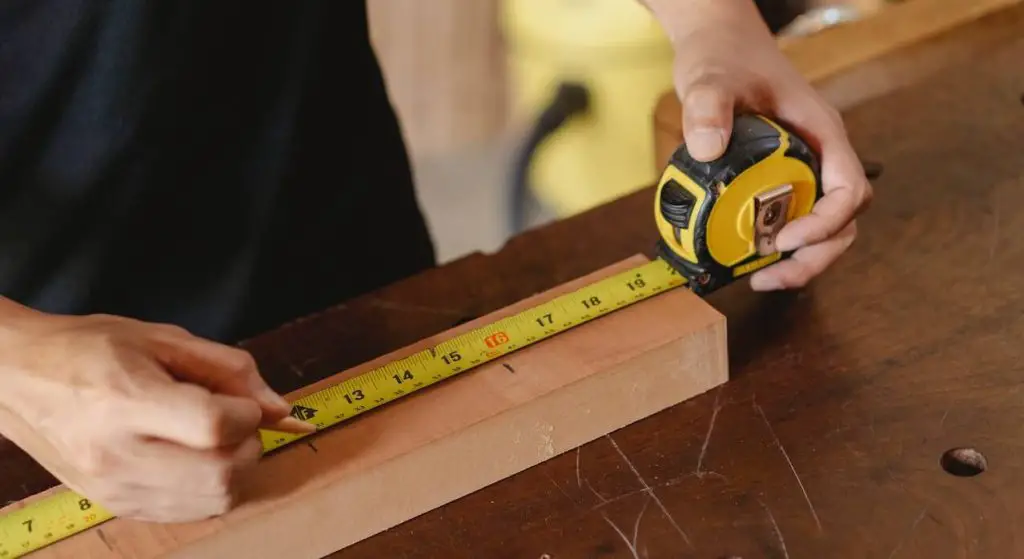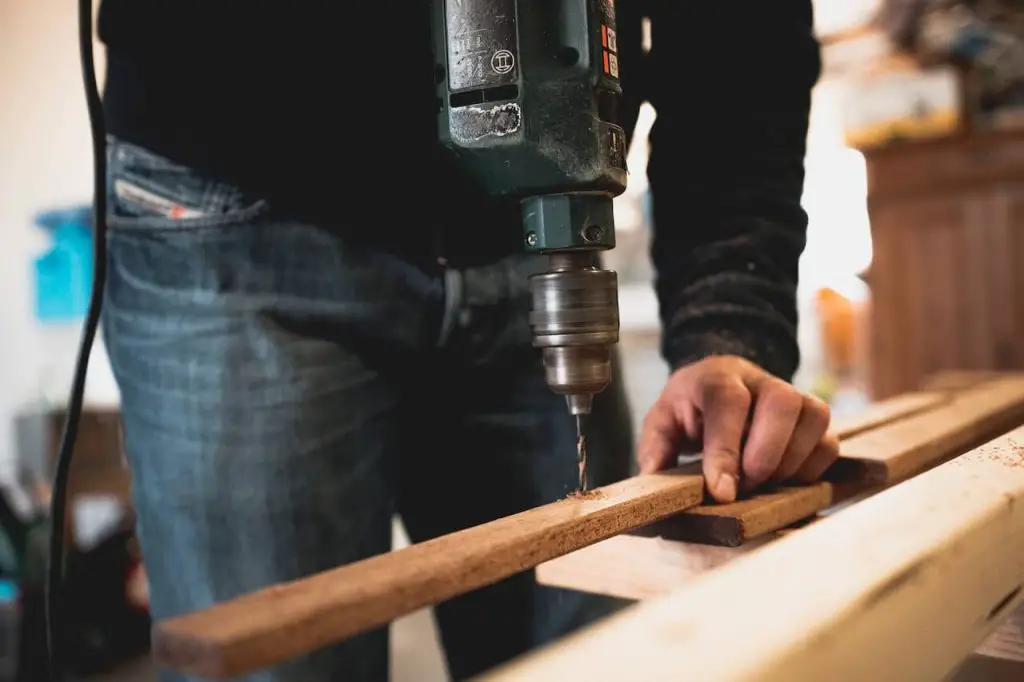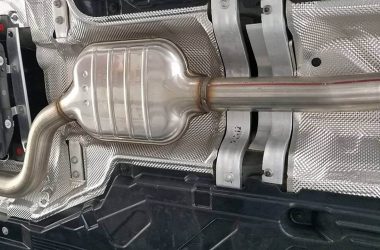If you own a pickup truck, hauling heavy stuff is usual. Moving heavy items demands secure and huge storage. But using a truck bed extender make this task simple and easy. A DIY truck bed extender may be the answer you’re looking for. With a DIY homemade truck bed extender, you can expand your truck’s capacity without buying an expensive commercial model. Mostly truck owners like DIY truck bed extenders except for buying expensive ones.
Creating a truck bed extender requires only basic skills and supplies to be completed quickly and cost-effectively. In this guide, we will show you how to build your DIY truck bed extender and provide tips on maximizing its use once it’s complete. So let’s get started!
Table of Contents
Benefits of DIY Truck bed Extender
Before we start this guide, let’s first discuss the benefits of having a truck bed extender.
A DIY homemade truck bed extender can help you save money on commercial models and increase your hauling capacity at the same time. Additionally, you don’t have to worry about buying an incompatible model that won’t fit in your truck or attaching it incorrectly.
With a DIY version, you can customize it perfectly to meet your needs and fit inside your truck precisely. Finally, if you ever decide to remove the truck bed extender for sitting purposes, it is easily removable.
List of materials needed
As you know the benefits, it’s time to start. Here are the materials you’ll need to make your DIY truck bed extender:
- Plywood or hardboard
- 4 metal angles
- 8 bolts with nuts and washers
- 12 hinges with screws
- 2 latch locks with mounting hardware
- Wood glue
- Paint (optional)
- Instructions for Making a Truck Bed Extender
You can Buy these items form nearby hardware store or online stores like Azamon.com
List of tools needed
You’ll need a few simple tools to begin building your DIY truck bed extender.
- Saw
- Drill
- Hammer
- Measuring tape or ruler
- Screwdriver
Preparing the Truck Bed
Before building the DIY truck bed extender, it is important to ensure your truck bed is ready for installation. You can start it by removing any items currently in your truck bed and checking for any rust or damage on the metal surface. Eradicate any rust spots with a wire brush or sandpaper for optimal results. After removing rust clean the area with a damp cloth to remove any dirt or residue.
Once you have prepared your truck bed, it’s time to begin constructing the Extender! The first step is to measure and cut two pieces of wood that will be the base of your DIY truck bed extender. Make sure the measurements are.
Measuring the truck bed
Measuring the truck bed is the first step in making a DIY truck bed extender. Measure the length and width of the truck bed area to know how much material will be needed for the Extender. When picking out supplies, look for plywood or other materials that can take on wear and tear from outdoor conditions. But remember, the measurement must be accurate; otherwise, all your efforts will become useless.
Building the Truck Bed Extender
Cutting The Materials
For your DIY truck bed extender, you’ll need to cut the wood into pieces that are the correct size for your truck. Ensure you leave a few extra inches on each side to allow for adjustments during assembly.
Assembling The Materials
After cutting all the pieces, it’s time to assemble them into a frame. Use screws or nails to secure each piece in place. If needed, use some wood glue for added strength. Once all the pieces are securely in place, use a drill to add additional support if needed.
Joining The Materials
The next step is joining the materials together. Joining is done using either a pocket hole joinery technique or dowel joints. To create a pocket hole joint, use an appropriate drill bit and drill two holes at either end of the pieces you need to join.
Secure them together by inserting screws into the holes. Dowel joints are created by drilling small holes, then inserting dowels made from wood into each hole before securing them with wood glue. Always remember that joining must be strong enough to bear every kind of vibration and shock.
Sanding And Smoothing The Edges
Once all the pieces are joined together, it’s time to sand down any rough edges or surfaces that may have been left over from cutting or assembling. Use sandpaper to smooth out any imperfections in the frame, and ensure everything looks uniform and neat.
Painting Or Finishing The Extender
The final step is finishing the Extender. You can choose to either paint it or finish it with a sealant. If you decide to paint it, take your time and make sure you get even coverage on all sides of the Extender. For added protection against moisture and water damage, use a sealant after painting. Paint will also give the Extender extra protection from sun damage and discoloration.
Also Read: How To make homemade truck bed tent
Mounting the Truck Bed Extender
Choosing The mounting method
The most important step in creating a DIY truck bed extender is to choose the right mounting method. Several mounting methods are available such as bolts, rivets and adhesives, you can choose according to your comfort and need. Before deciding on the best mounting solution, take a moment to investigate each option carefully and determine which is most suitable for your individual needs.
Measuring And Marking The Mounting Points
Once you have chosen the mounting method, measuring and marking where the Extender will be attached to the truck bed is important. It’s important to make sure that all measurements are accurate before drilling into the extender or truck bed, as improper measurements could result in a failing mount.
Drilling Holes In The Extender
Once the mounting points have been measured and marked, it’s time to drill holes into the Extender.To guarantee a secure installation, always use the correct type of bit for your mounting technique and ensure that the hole is wide enough to fit whatever hardware you have in mind.
Attaching The Extender To The Truck Bed
Once all holes have been drilled, it is time to attach the Extender to the truck bed. This step requires careful attention, as improper attachment could cause damage to both the truck bed and the Extender itself. Make sure that all bolts, rivets, or adhesives are tightened correctly and that they are secure before continuing.
Checking For Stability
Once the Extender has been attached to the truck bed, it’s important to check for stability. Ensure all bolts, rivets, or adhesives are tightened properly, and the Extender is completely stable before use. If any issues are found, address them immediately to avoid potential accidents or damage.
Testing the Truck Bed Extender
Once you’ve built your DIY truck bed extender, you will want to test it. To do so, set up the materials and tools necessary for the task. Ensure the Extender has securely fastened on your truck bed and that any connections are tight. Ensure that any hooks or attachments are secure too.
Once everything is in place, climb into the bed of your truck and check out how it feels when sitting with an extended-length load inside. Your body weight should be evenly distributed across the entire bed and not just concentrated at one end, as this could cause fatigue or instability while driving.
Also, carefully observe whether the structure has adequate strength and won’t easily bend or break when stressed. If everything checks out, take the bed extender out for a test run. Take it slow and watch the load to make sure it remains balanced and secure all the way. When it comes to transporting cargo with a diy truck bed extender, safety always comes first!
Remember that no matter how well-made your DIY truck bed extender may be, it must still be designed for every possible situation. Be aware of any potential problems when using an extended load in your pickup truck. If in doubt, consult with an expert or take extra precautions before heading out. With careful use and maintenance, your DIY homemade truck bed extender can be a great way to extend the carrying capacity of your pickup truck.
Alternative Truck Bed Extender Solutions
If you’re looking for an alternative solution to a traditional truck bed extender, consider one of these options:
- Hitch Extenders – These are simple and effective solutions for extending the length of your truck bed. They attach to the hitch receiver on the rear of your vehicle and extend outwards away from the back of your truck, allowing you to carry more cargo securely.
- Tailgate Extenders– A tailgate extender is similar to a hitch extender but attaches directly to the tailgate rather than the hitch receiver. This option is great for carrying large items like mattresses or lumber that don’t fit in your truck bed because it extends down toward the ground and holds them in place.
- Truck Bed Covers – These covers can be secured to the sides of your truck bed, providing an enclosed area for extra storage space. Not only do they offer additional cargo capacity, but they can also help protect your items from the elements.
- Slide-in Cargo Boxes – If you’re looking for a more permanent solution to a traditional truck bed extender, consider installing a slide-in cargo box in the bed of your truck. This will add an extra layer of security to keep your items safe while providing you with increased cargo space for larger loads.
Also Read: HOW TO REMOVE MOISTURE FROM CAR HEADLIGHT WITHOUT OPENING
Safety Tips
When it comes to using a DIY truck bed extender, safety is always the top priority. These are some important tips to keep in mind before using a truck bed extender:
- Ensure your vehicle is equipped with proper tie-downs and anchors to secure the load. Poorly secured items can become loose and fly off during transit, putting other drivers at risk.
- Do not overload the Extender beyond its weight capacity. This can damage the Extender and increase the chances that items will fall off during transport.
- Always secure any items you’re transporting correctly on both sides of the truck bed extender, so nothing falls off unexpectedly onto another driver’s lane. Use rope or ratchet straps to ensure everything stays in place.
- Make sure that the truck bed extender is properly attached to the vehicle before driving, and regularly check while on the road for any signs of wear or tear. In addition, check the fasteners periodically to make sure they are secure.
FAQ’S
How long does it take to build a truck bed extender?
The time it takes to build a truck bed extender will depend on the complexity and quality of the project. Generally speaking, building a truck bed extender can take a few hours to several days. If you are new to woodworking, it will likely take longer. Planning out the project and purchasing the necessary materials before beginning is important, as this will help make the process more efficient.
How much weight can a DIY truck bed extender carry?
The weight capacity of a DIY truck bed extender depends on the design and materials used. A well-constructed, sturdy frame made from strong materials such as steel or aluminum should be able to carry up to 500 pounds. If you use lighter materials, the capacity may be lower. It is also important to consider the size of the bed extender and how it is attached to your truck.
Make sure that your DIY truck bed extender is securely attached to your truck and that it won’t come loose or move when carrying a heavy load.
Is it safe to use a DIY truck bed extender?
The answer to this depends on the experience and skills of the person making their truck bed extender. If someone is experienced with building and welding, making their truck bed extender is possible.
However, it is important to use quality materials that are rigid enough to support the weight of large cargo. It is also essential to make sure that all welds are done correctly and securely so that the Extender does not become a safety hazard
Conclusion
A DIY truck bed extender is be a great way to extend the length of your truck bed and make it possible to transport larger items. It is relatively easy to build if you have some basic tools and materials and can save money compared to buying a pre-made option. You will also have the satisfaction of knowing that you built something yourself. With patience and effort, anyone can make their DIY truck bed extender quickly!










